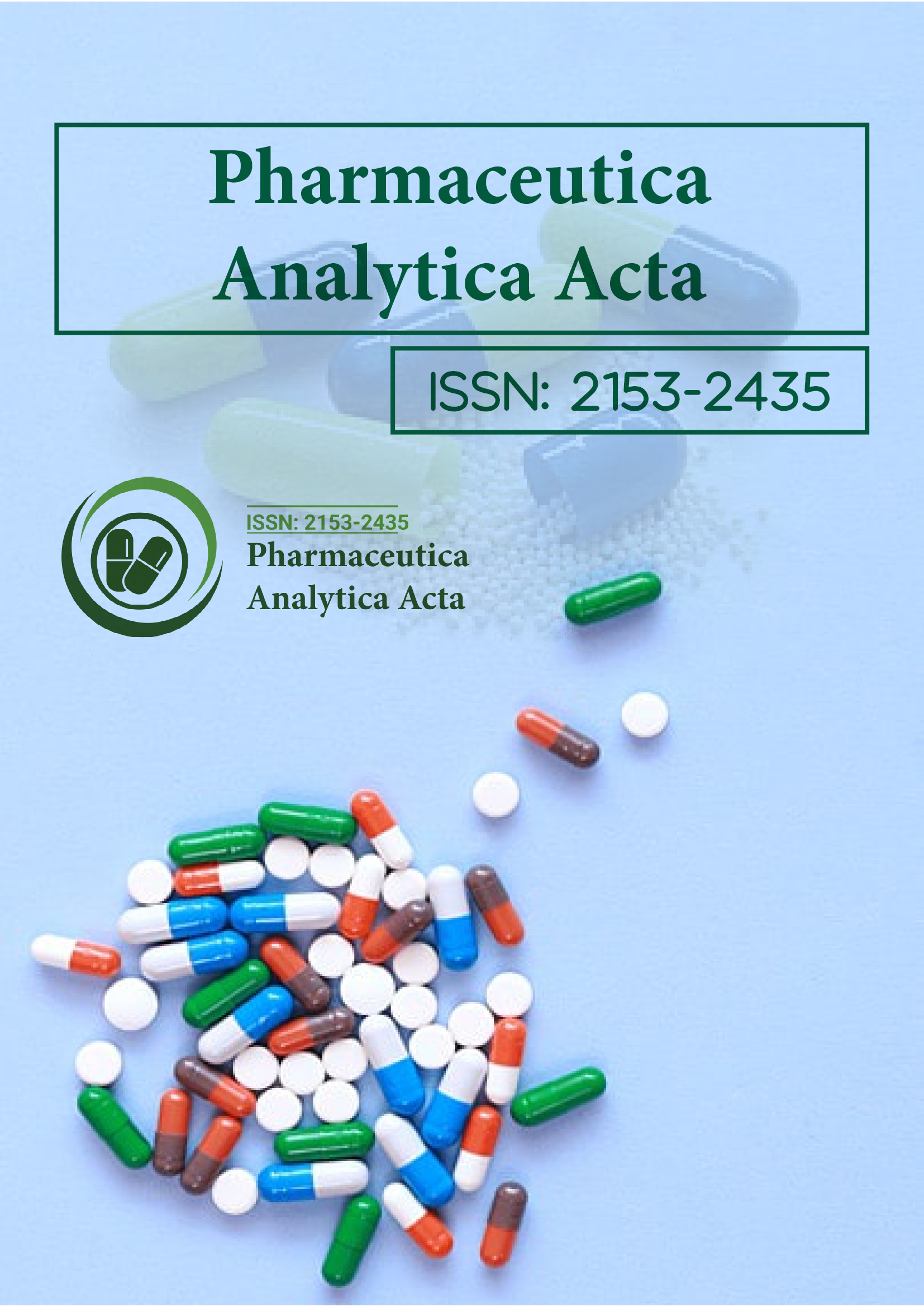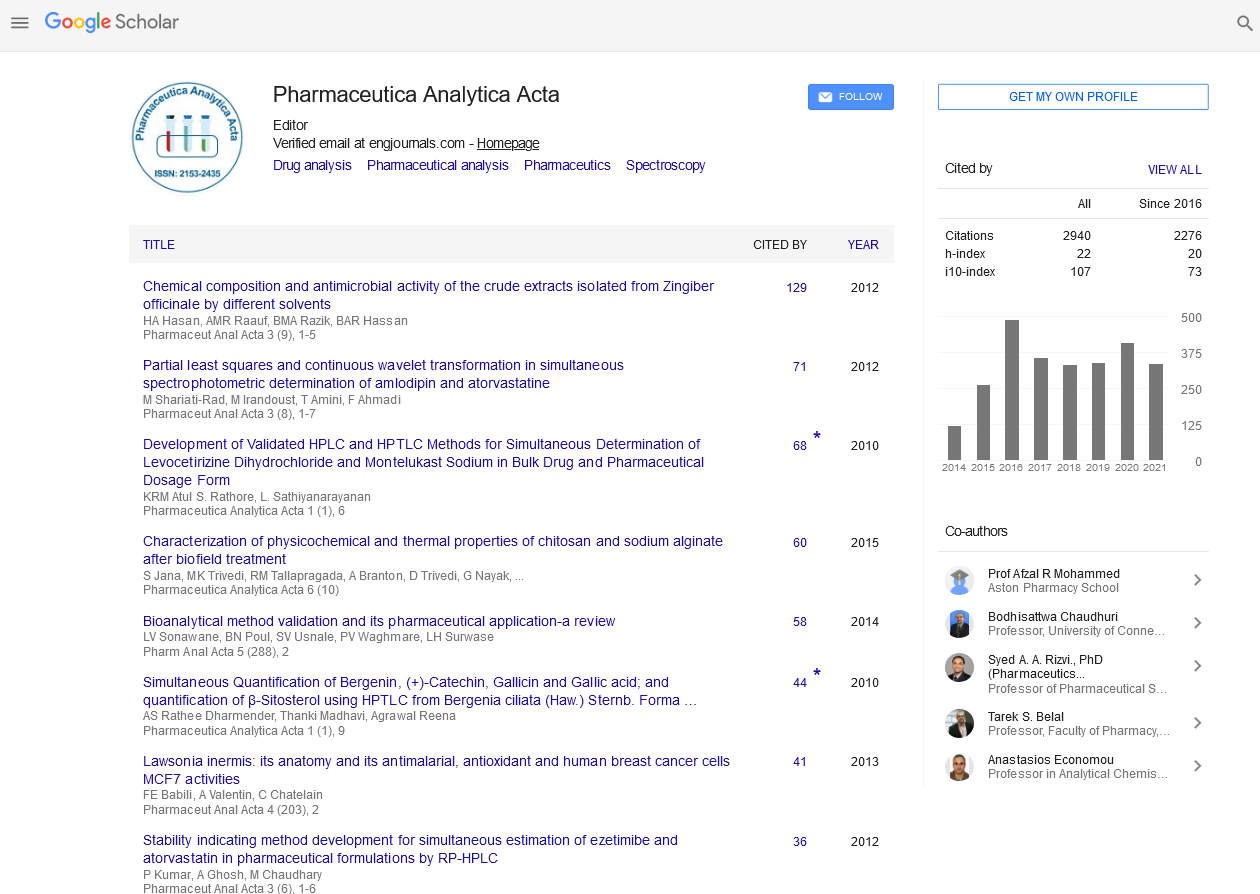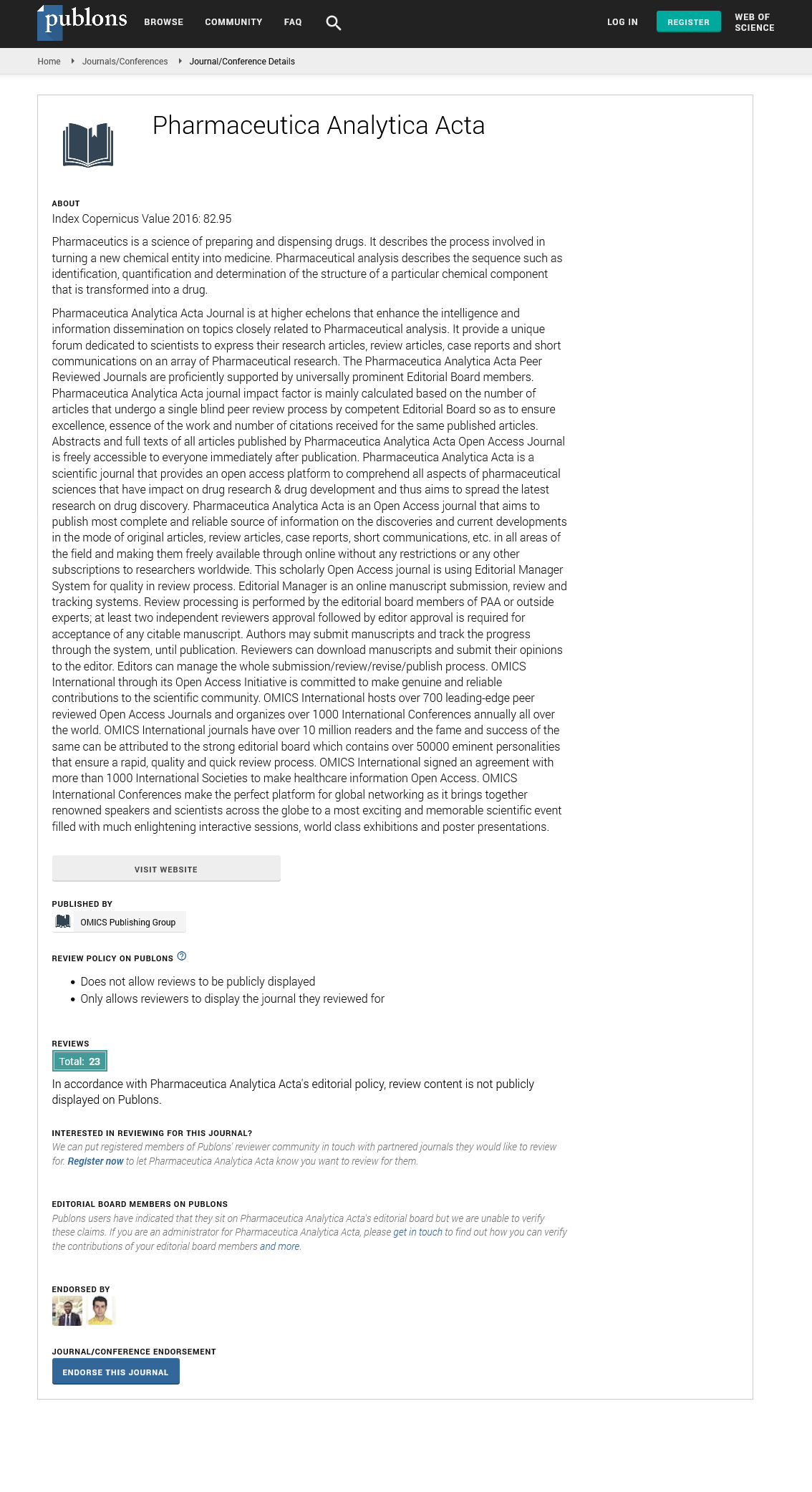Indexed In
- Open J Gate
- Genamics JournalSeek
- Academic Keys
- JournalTOCs
- The Global Impact Factor (GIF)
- China National Knowledge Infrastructure (CNKI)
- Ulrich's Periodicals Directory
- RefSeek
- Hamdard University
- EBSCO A-Z
- OCLC- WorldCat
- Publons
- Geneva Foundation for Medical Education and Research
- Euro Pub
- Google Scholar
Useful Links
Share This Page
Journal Flyer

Open Access Journals
- Agri and Aquaculture
- Biochemistry
- Bioinformatics & Systems Biology
- Business & Management
- Chemistry
- Clinical Sciences
- Engineering
- Food & Nutrition
- General Science
- Genetics & Molecular Biology
- Immunology & Microbiology
- Medical Sciences
- Neuroscience & Psychology
- Nursing & Health Care
- Pharmaceutical Sciences
Opinion Article - (2024) Volume 15, Issue 4
Sustainable Pharma: Eco-Friendly Innovations in Drug Production and Delivery
Weiqing Wang*Received: 29-Nov-2024, Manuscript No. PAA-24-27775; Editor assigned: 02-Dec-2024, Pre QC No. PAA-24-27775 (PQ); Reviewed: 16-Dec-2024, QC No. PAA-24-27775; Revised: 23-Dec-2024, Manuscript No. PAA-24-27775 (R); Published: 30-Dec-2024, DOI: 10.35248/2153-2435.24.15.799
Description
Every company has made sustainability a top priority and the pharmaceutical sector is no exception. With growing concerns over the environmental impact of drug production, waste generation and energy consumption, there is a push toward ecofriendlier practices. As pharmaceutical companies look for creative methods to save waste, lower their carbon footprint and apply green chemistry concepts to drug development and delivery, sustainable pharma is quickly gaining steam. This change not only supports international environmental objectives but also creates opportunities for more economical and effective solutions that have the potential to completely transform the manufacturing and distribution of pharmaceuticals. The use of green chemistry is one of the major developments propelling sustainable pharmaceutical. Conventional drug production methods frequently include energy-intensive techniques, dangerous chemicals and solvents that increase waste and pollution. The goal of green chemistry is to create medication production processes that use less energy, less hazardous chemicals and renewable resources while also being less detrimental to the environment. For instance, biocatalysts-the process of catalyzing chemical reactions with natural enzymes-is gaining popularity as an alternative to traditional chemical synthesis techniques. In addition to being more environmentally friendly, this method is frequently more effective, enabling the manufacturing of high-quality medications with fewer waste products and byproducts. The use of eco-friendly, alternative materials in pharmaceutical packaging is another exciting area of sustainable innovation. Waste is greatly increased by conventional pharmaceutical packaging, which is frequently composed of plastic and other non-biodegradable materials. In order to lessen the environmental impact of medicine packaging, businesses are now looking into alternatives including plantbased polymers, recyclable materials and biodegradable packaging.
Some businesses are even using innovative designs that completely do away with the need for bulky packaging, which lowers the items' overall environmental impact. This move towards more environmentally friendly packaging helps businesses lessen their impact on plastic pollution while also satisfying consumer demand for items that care about the environment. The pharmaceutical sector is considering more environmentally friendly delivery methods in addition to more sustainable production methods. Traditional drug delivery techniques, such intravenous injections and oral pills, frequently use ingredients and procedures that are not good for the environment. For example, injections frequently use single-use plastic syringes and tablets are usually covered in nonbiodegradable coatings. More environmentally friendly treatment alternatives are being made possible by new advancements in drug delivery technology, such as microneedle patches and biodegradable implants. These developments not only cut waste but also increase drug delivery effectiveness, guaranteeing that drugs are given more precisely and precisely while having a smaller negative impact on the environment. Another essential area of sustainable pharmaceuticals is energy efficiency. Energy usage in drug production facilities is notoriously high, especially during the manufacturing and distribution phases. Pharmaceutical firms are addressing this by reducing their dependency on fossil fuels by investing in renewable energy sources like solar and wind power. Businesses may drastically cut their carbon footprints and help create a more sustainable future by switching to green energy. Additionally, advancements like improved waste management systems and more effective manufacturing techniques are assisting in lessening the overall environmental impact of medication manufacture. The pursuit of sustainable pharmaceuticals still faces obstacles despite the advancements gained. A large investment in new technologies and procedures is frequently necessary to make the switch to greener practices and for some businesses, particularly smaller ones, this might be prohibitively expensive.
Adopting sustainable practices while upholding the high standards of efficacy, safety and quality that patients demand from pharmaceuticals can also be a challenging balancing act. But sustainable pharmaceutical has several advantages that go well beyond environmental considerations. The pharmaceutical sector can also cut production costs by employing renewable resources, increasing efficiency and decreasing waste. This could eventually make drugs more accessible and inexpensive for people all around the world. Sustainable pharmaceutical is becoming a reality rather than a pipe dream. The industry is adopting innovative approaches to drug delivery and production that not only help the environment but also result in safer, more effective and more economical patient treatments. With continuous improvements in energy efficiency, packaging and green chemistry, the pharmaceutical industry is moving closer to a more sustainable future. Even though there are still obstacles to overcome, the move to environmentally friendly methods presents a bright future, guaranteeing that the next generation of medications will be more environmentally friendly while still enhancing human health.
Citation: Wang W (2024). Sustainable Pharma: Eco-Friendly Innovations in Drug Production and Delivery. Pharm Anal Acta. 15:799.
Copyright: © 2024 Wang W. This is an open access article distributed under the terms of the Creative Commons Attribution License, which permits unrestricted use, distribution and reproduction in any medium, provided the original author and source are credited


